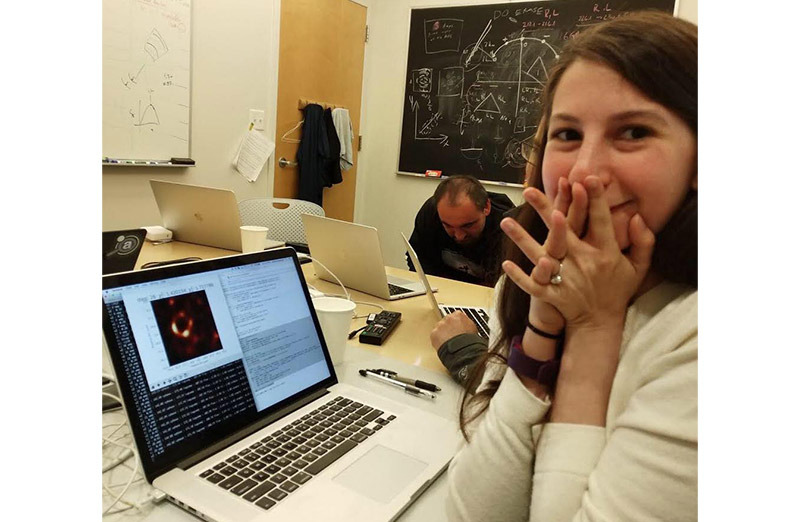On Wednesday, the world got its first glimpse at a black hole, or more accurately its shadow, in what is being hailed as a monumental scientific achievement that was once thought impossible. And Mac was there.
Using data gathered by the Event Horizon Telescope, a network of radio telescopes spanning the globe, astrophysicists were able to piece together an image of a black hole positioned in the Messier 87 galaxy. More than 200 scientists have been working on the effort for over a decade.
Because the supermassive target is so distant — 55 million light years from Earth — scientists required concurrent data from eight radio observatories around the world. Spanning four continents and Hawaii, the EHT is essentially an Earth-sized telescope tasked with capturing evidence of a black hole's accretion disc. More specifically, the telescope network detects radiation emitted by particles in the mass of cosmic matter as it swirls toward the event horizon, the edge of the black hole beyond which nothing can escape.
While the black hole proper cannot be observed, the event horizon's shadow is set off against the comparatively bright accretion disc.
In April 2017, weather conditions allowed the telescopes, coordinated by atomic clocks, to take simultaneous readings of M87, reports The Guardian. According to EHT, petabytes of raw data was recorded and stored on what ultimately amounted to a half ton of hard drives.
Participating observatories include the Atacama Large Millimeter Array (ALMA) and Atacama Pathfinder Experiment (APEX) in Chile, the IRAM 30-meter Telescope in Spain, the James Clerk Maxwell Telescope (JCMT) and Submillimeter Array (SMA) in Hawaii, the Kitt Peak Telescope in Arizona, the Large Millimeter Telescope Alfonso Serrano (LMT) in Mexico, the Greenland Telescope (GLT) and the South Pole Telescope (SPT).
Gathering the data took years of preparation and a bit of luck, but combining that information necessitated the creation of completely new technology. Enter Katie Bouman, who as a graduate student in computer science at the Massachusetts Institute of Technology three years ago led a team of researchers to create an algorithm robust enough to compile the EHT data. Not previously involved in the fields of astronomy or astrophysics, Bouman was recruited to the program while working on a PhD in computer vision.
The software, running on highly specialized supercomputers at the Max Planck Institute for Radio Astronomy and MIT Haystack Observatory, was fed the radio telescope data last summer and slowly processed the image seen above. Bouman conducted multiple tests to verify the findings
"We all watched as the images appeared on our computer. The ring came so easily. It was unbelievable," Bouman said in a statement to Time. "Even though we had worked on this for years, I don't think any of us expected we would get a ring that easily. We just expected a blob."
Using a MacBook Pro, likely as a remote terminal, Bouman was among the first people in history to cast eyes on a black hole. The photo of her initial reaction was taken last year, but was kept secret until today's announcement.
Bouman will soon start work at Caltech as an assistant professor, though she intends to continue with the EHT as the project moves toward the collection of more advanced imagery like movies. Bouman's algorithm is also being used to process a data from a second black hole target, Sagittarius A*, which could yield results in the near future.
 AppleInsider Staff
AppleInsider Staff







-m.jpg)






 Charles Martin
Charles Martin

 Malcolm Owen
Malcolm Owen
 William Gallagher
William Gallagher

 Christine McKee
Christine McKee
 Wesley Hilliard
Wesley Hilliard








36 Comments
What an incredible time to be alive!
This is a little unclear. Were Macs used to process any of the data or did she just get the completed file emailed to her and view it on a Mac?
So cool!!
it has nothing to do with the Mac. Give Mac a break.